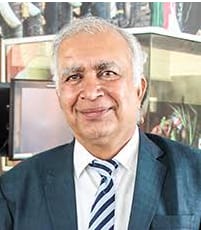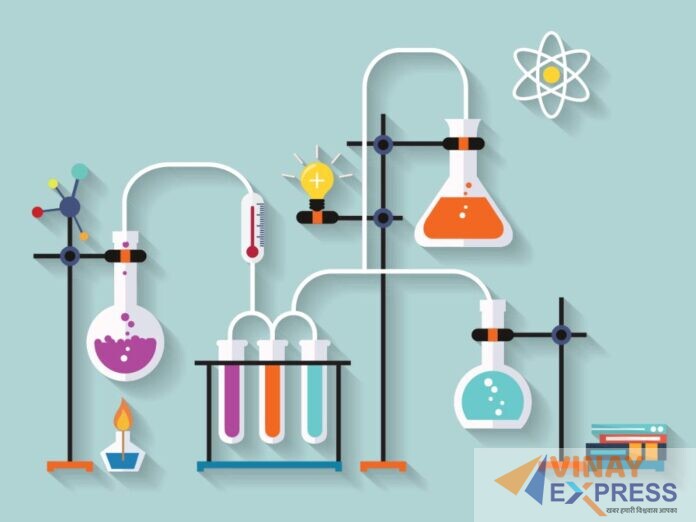Unique Concept of physics series Lecture: 8: Heat and Thermodynamics by prof Om kumar harsh

Information:
This is an important lecture on Heat and Thermodynamics basics.The next lecture will be based on advanced questions. We have decided to submit some of the questions pertaining to the competition as well. There are some confusing words and terminology which has been taken of care. Such terminology has been explained in a much better way.Once you understand this lecture will help in making your mind for the next lectures on Heat and thermodynamics.
जानकारी:
यह ऊष्मा और ऊष्मागतिकी की मूल बातें पर एक महत्वपूर्ण व्याख्यान है। अगला व्याख्यान उन्नत प्रश्नों पर आधारित होगा। हमने प्रतियोगिता से संबंधित कुछ प्रश्नों को भी प्रस्तुत करने का निर्णय लिया है। कुछ भ्रमित करने वाले शब्द और शब्दावली हैं जिनका ध्यान रखा गया है। इस तरह की शब्दावली को बहुत बेहतर तरीके से समझाया गया है।एक बार जब आप इस व्याख्यान को समझ लेते हैं तो आपको ऊष्मा और ऊष्मागतिकी पर अगले व्याख्यान के लिए अपना मन बनाने में मदद मिलेगी।

- 1. How can we define Heat or thermal energy?
Thermal energy (also known as heat energy) is produced when a rise in temperature produces atoms and molecules to go more rapidly and have a collision with each other. The energy that comes from the temperature of the heated substance is called thermal energy.
- 2. How is heat generated?
Heat is generated by mechanical and electrical machines, and every time one rubs against another. When warmer things are shared with cooler ones, hot things lose heat and cool things achieve until they are all the similar temperature. A hotter object can warm a colder one through make contact or from a gap.
- 3. What’s really heat is and how it is produced?
Heat energy is the outcome of the movement of little particles known as atoms, molecules or ions in solids, liquids and gases. Heat energy can be transmitted from one object to another. The transmission or flow owing to the variation in temperature between the two objects is known as heat.
- 4. What just is heat?
Heat is a kind of energy that can be transported from one body to another or even produced at the cost of the failure of other types of energy. To check, temperature is a gauge of the capability of a material to transmit heat energy to a further physical system.
- 5. What makes heat generated suggest?
The energy moved because of a variation in temperature.
What are the methods to generate heat?
Heat can be generated in various approaches:
- Solar radiation.
- Rubbing.
- Burning.
- 6. How we can say that heat generated and wasted in the body?
The body spends two-third of its heat because of radiation. Conduction (for example as heat damage from sleeping on the cool floor). Heat is wasted in air temperatures smaller than 68°F (20°C). The body spends about 2% of its heat out of air conduction.
- 1. ऊष्मा या तापीय ऊर्जा:
तापीय ऊर्जा (जिसे ऊष्मीय ऊर्जा भी कहा जाता है) तब उत्पन्न होती है जब तापमान में वृद्धि के कारण परमाणु और अणु तेजी से आगे बढ़ते हैं और एक दूसरे से टकराते हैं। गर्म पदार्थ के ताप से जो ऊर्जा प्राप्त होती है उसे ऊष्मीय ऊर्जा कहते हैं।
प्रश्न 2. ऊष्मा कैसे उत्पन्न होती है?
गर्मी यांत्रिक और विद्युत मशीनों द्वारा उत्पन्न होती है, और किसी भी समय एक चीज किसी और चीज के खिलाफ रगड़ती है। जब गर्म चीजों को कूलर के साथ रखा जाता है, तो गर्म चीजें गर्मी खो देती हैं और ठंडी चीजें तब तक प्राप्त करती हैं जब तक कि वे सभी एक ही तापमान पर न हों। एक गर्म वस्तु एक कूलर को संपर्क से या दूर से गर्म कर सकती है।
प्र. 3. ऊष्मा क्या है और यह कैसे उत्पन्न होती है?
ऊष्मा ऊर्जा ठोस, तरल और गैसों में परमाणु, अणु या आयन नामक छोटे कणों की गति का परिणाम है। ऊष्मा ऊर्जा को एक वस्तु से दूसरी वस्तु में स्थानांतरित किया जा सकता है। दो वस्तुओं के बीच तापमान में अंतर के कारण स्थानांतरण या प्रवाह को गर्मी कहा जाता है।
प्रश्न 4. ऊष्मा वास्तव में क्या है?
ऊष्मा ऊर्जा का एक रूप है जिसे एक वस्तु से दूसरी वस्तु में स्थानांतरित किया जा सकता है या ऊर्जा के अन्य रूपों के नुकसान की कीमत पर भी बनाया जा सकता है। तापमान एक पदार्थ की क्षमता का एक उपाय है, या किसी भी भौतिक प्रणाली की, गर्मी ऊर्जा को किसी अन्य भौतिक प्रणाली में स्थानांतरित करने के लिए।
प्रश्न 5. उत्पादित ऊष्मा का क्या अर्थ है?
एन। 1 तापमान में अंतर के परिणामस्वरूप ऊर्जा स्थानांतरित होती है। 2 ऊष्मीय ऊर्जा के कारण शरीर में होने वाली अनुभूति; गरमाहट।
गर्मी पैदा करने के तरीके क्या हैं?
गर्मी का उत्पादन कई तरीकों से किया जा सकता है:
- सौर विकिरण।
- रगड़ना।
- जलना।
प्रश्न 6. शरीर में गर्मी कैसे उत्पन्न और नष्ट होती है?
विकिरण के माध्यम से शरीर अपनी 2/3गर्मी खो देता है। जैसे ठंडी जमीन पर सोने से गर्मी का नुकसान। 68°F से कम हवा के तापमान में गर्मी खो जाती है। वायु चालन के माध्यम से शरीर अपनी गर्मी का लगभग 1/50खो देता है।
- 7. What is the brief answer about heat?
Heat is the transport of kinetic energy from one medium to another, or from an energy supplier to a medium. Such energy transmission can arise in three circumstances: radiation, conduction, and convection.
- 8. How many techniques can heat be created?
Heat is conveyed by three distinct techniques: They are: conduction, convection, and radiation.
- 9. What is the answer about heat for children?
Heat is the transport of energy from a one body to another owing to a variation in temperature.
- 10. What is the quick heat instance?
The best instance of heat energy in within our solar structure is the sun. The sun radiates heat to heat us up on earth. Once the burner of a stovetop is very warm, it is a resource of heat energy.
- 11. Where does the heat take place from?
The flow of heat from Earth’s inner to the surface is expected around 50 terawatts (TW) and come in from two major suppliers in approximately equivalent quantities: the radiogenic heat which is formed by the radioactive deterioration of isotopes (withing mantle/crust), and the primordial heat gone over (from creation of Earth).
- 12. What kind of a force heat may be referred?
Heat is a kind of energy. It cannot be claimed as force. Any shift in momentum is owing to heat being attracted by the gas, which improves its kinetic energy, and consequently the gas temperature.
प्रश्न 7. ऊष्मा संक्षिप्त उत्तर क्या है?
ऊष्मा एक माध्यम या वस्तु से दूसरे माध्यम या किसी ऊर्जा स्रोत से किसी माध्यम या वस्तु में गतिज ऊर्जा का स्थानांतरण है। ऐसा ऊर्जा हस्तांतरण तीन तरीकों से हो सकता है: विकिरण, चालन और संवहन।
- 8. ऊष्मा कितने तरीकों से उत्पन्न की जा सकती है?
ऊष्मा को तीन अलग-अलग तरीकों से स्थानांतरित किया जाता है: चालन, संवहन और विकिरण।
प्रश्न 9. बच्चों के लिए गर्मी अर्थक्या है?
गर्मी का विज्ञान। ताप में अंतर के कारण एक वस्तु से दूसरी वस्तु में ऊर्जा का स्थानांतरण ऊष्मा कहलाता है।
- 10. ऊष्मा का उदाहरण क्या है?
हमारे सौरमंडल में ऊष्मा ऊर्जा का सबसे बड़ा उदाहरण स्वयं सूर्य है। सूर्य हमें पृथ्वी ग्रह पर गर्म करने के लिए गर्मी विकीर्ण करता है। जब स्टोवटॉप का बर्नर बहुत गर्म होता है, तो यह ऊष्मा ऊर्जा का स्रोत होता है। … ऑटोमोबाइल ईंधन जैसे गैसोलीन ऊष्मा ऊर्जा के स्रोत हैं,
प्रश्न 11. गर्मी कहाँ से आती है?
पृथ्वी के आंतरिक भाग से सतह तक ऊष्मा का प्रवाह अनुमानित रूप से कईटेरावाट (TW) है और मोटे तौर पर समान मात्रा में दो मुख्य स्रोतों से आता है: मेंटल और क्रस्ट में आइसोटोप के रेडियोधर्मी क्षय द्वारा उत्पादित रेडियोजेनिक गर्मी, और प्राइमर्डियल पृथ्वी के निर्माण से बची हुई गर्मी।
- 12. ऊष्मा क्या बल है?
ऊष्मा ऊर्जा का एक रूप है। यह कोई बल नहीं है। संवेग में कोई भी परिवर्तन गैस द्वारा ऊष्मा को अवशोषित करने के कारण होता है, जिससे इसकी गतिज ऊर्जा बढ़ जाती है, और इसलिए गैस का तापमान बढ़ जाता है।
- 13. What can we define the exothermic heat?
Reaction like exothermic happens once the temperature of a structure improves owing to the development of heat. For example: A system that distributes heat to the atmospheres, this exothermic reaction, possesses a minus ΔH by convention, because the enthalpy of the commodities is reduced than the enthalpy of the reactants of given system.
- 14. What did you say about heat and its kinds?
First is conduction, which happens in solids and fluids that are at rest, such as metal bar while the other type of heat transport is due to convection, which happens in liquids and gases that are in flow. Last type of heat transmission is radiation, which happens without material hauler.
Q.15. What are the three normal types of heat?
Heat can be moved by three methods: by conduction, by convection, and by radiation.
- Conduction may be defined as transmission of energy from a molecule to a further by immediate link.
- Convection may be defined as passage of heat by way of a fluid for example water and air.
- Radiation may be termed as transmission of heat by the way of waves of electromagnetic in nature.
- 16a. What are the primary resources of heat?
- Solar Energy. The sun is Earth’s key outer supply of heat.
- Geothermal Energy. Geothermal energy appears from inside the Earth.
- Biomass. …
- Fossil Fuels.
16.b. what is the difference between heat and temperature?
Heat may be regarded as a type of energy. It may be computed in the units of Joules. It correlates to kinetic energy which triggers the particles in an entity or substance to vibrate while Temperature is the mean kinetic energy of the particles in a material or substance.
- 13. ऊष्माक्षेपी (exothermic) ऊष्मा क्या है?
- 13. एक ऊष्माक्षेपी अभिक्रियाक्याहै?
एक ऊष्माक्षेपी अभिक्रिया तब होती है जब ऊष्मा के विकास के कारण किसी निकाय का तापमान बढ़ जाता है। … एक प्रणाली जो परिवेश को गर्मी छोड़ती है, एक एक्ज़ोथिर्मिक प्रतिक्रिया, परंपरा के अनुसार एक नकारात्मक ΔH है, क्योंकि उत्पादों की थैलेपी प्रणाली के अभिकारकों की थैलीपी से कम है।
- 14. ऊष्मा क्या है और इसके प्रकार क्या हैं?
पहला चालन है, जो ठोस या तरल पदार्थ में होता है जो आराम पर होते हैं, जैसे कि यह धातु की पट्टी। गर्मी हस्तांतरण का दूसरा रूप संवहन है, जो तरल पदार्थ या गैसों में होता है जो गति में होते हैं। और गर्मी हस्तांतरण का तीसरा रूप विकिरण है, जो बिना किसी सामग्री वाहक के होता है।
प्रश्न 15. गर्मी के 3 प्रकार क्या हैं?
ऊष्मा को तीन तरीकों से स्थानांतरित किया जा सकता है: चालन द्वारा, संवहन द्वारा और विकिरण द्वारा।
- चालन सीधे संपर्क द्वारा एक अणु से दूसरे अणु में ऊर्जा का स्थानांतरण है। …
- संवहन एक तरल पदार्थ जैसे पानी या हवा द्वारा गर्मी की गति है। …
- विकिरण विद्युतचुंबकीय तरंगों द्वारा ऊष्मा का स्थानांतरण है।
प्रश्न 16. ऊष्मा के मुख्य स्रोत क्या हैं?
ऊष्मा ऊर्जा के प्राकृतिक स्रोत पौधे और पशु उत्पादों, जीवाश्म ईंधन, सूर्य और पृथ्वी के भीतर से पाए जा सकते हैं।
- सौर ऊर्जा। सूर्य पृथ्वी की ऊष्मा ऊर्जा का प्रमुख बाहरी स्रोत है। …
- भू – तापीय ऊर्जा। भूतापीय ऊर्जा पृथ्वी के भीतर से आती है। …
- बायोमास। …
- जीवाश्म ईंधन।
- 17a. How can we differentiate about heat a force or energy?
- Thermal energy indicates to the energy covered inside a system that is accountable for its temperature. Heat is the movement of thermal energy.
17b. What is heat definition fitting to physics?
- Heat is the kind of energy that is transported among two materials of distinct temperature. This transmission of energy arises for the reason that of variations in the mean translational kinetic energy each molecule between two substances.
- 18a. What does it imply that there is a negative heat?
Negative Heat negative implies that the quantity of heat is being out means the reaction is exothermic.
- 18b. How we exactly say about heat and work?
In behaviour Heat and work are two distinct aspects of transporting energy from one kind of system to another system. Heat is regarded as the transfer of thermal energy among systems, but work is the transmission of technical energy among two systems.
- 19. Why there is a need of heat transference?
A region of greater kinetic energy transmits thermal energy to the smaller kinetic energy region. High-velocity particles collide with particles shifting at a gradual speed, therefore reduce speed particles boost their kinetic energy. This is a typical type of heat transport and happens because of physical contact.
- 20. How can we differentiate the heat and radiation?
In conduction, heat transfer takes place between objects by direct contact. In convection, the heat transfer takes within the fluid. In radiation, heat transfer occurs through electromagnetic waves without involving particles.
- 21. How can we define the structure or composition of heat?
Heat transport processes are the means through which thermal energy can be transported among bodies, this is based on the fundamental notion that kinetic energy or heat needs to be at balance.
प्रश्न 17. गर्मी एक बल या ऊर्जा है?
- ऊष्मीय ऊर्जा एक प्रणाली के भीतर निहित ऊर्जा को संदर्भित करती है जो इसके तापमान के लिए जिम्मेदार होती है। ऊष्मा तापीय ऊर्जा का प्रवाह है।
- भौतिकी के अनुसार ऊष्मा क्या है?
- उष्मा वह है जिसे वैज्ञानिक ऊर्जा के रूप कहते हैं जो अलग-अलग तापमान की दो सामग्रियों के बीच स्थानांतरित होता है। ऊर्जा का यह स्थानांतरण दो सामग्रियों में प्रति अणु औसत स्थानान्तरण गतिज ऊर्जा में अंतर के कारण होता है।
प्रश्न 18. ऋणात्मक ऊष्मा का क्या अर्थ है?
गर्मी (Q) नकारात्मक है जब गर्मी की मात्रा जारी की जा रही है/प्रतिक्रिया एक्ज़ोथिर्मिक है।
प्रश्न 18. ऊष्मा और कार्य क्या है?
ऊष्मा और कार्य ऊर्जा को एक प्रणाली से दूसरी प्रणाली में स्थानांतरित करने के दो अलग-अलग तरीके हैं। … ऊष्मा प्रणालियों के बीच तापीय ऊर्जा का स्थानांतरण है, जबकि कार्य दो प्रणालियों के बीच यांत्रिक ऊर्जा का स्थानांतरण है।
- 19. ऊष्मा का स्थानांतरण क्यों होता है?
उच्च गतिज ऊर्जा का क्षेत्र ऊष्मीय ऊर्जा को निम्न गतिज ऊर्जा क्षेत्र की ओर स्थानांतरित करता है। उच्च गति के कण धीमी गति से गति करने वाले कणों से टकराते हैं, परिणामस्वरूप धीमी गति के कण अपनी गतिज ऊर्जा को बढ़ाते हैं। यह गर्मी हस्तांतरण का एक विशिष्ट रूप है और शारीरिक संपर्क के माध्यम से होता है।
प्रश्न 20. ऊष्मा और विकिरण में क्या अंतर है?
चालन में, सीधे संपर्क द्वारा वस्तुओं के बीच गर्मी हस्तांतरण होता है। संवहन में, गर्मी हस्तांतरण द्रव के भीतर होता है। विकिरण में, कणों को शामिल किए बिना विद्युत चुम्बकीय तरंगों के माध्यम से गर्मी हस्तांतरण होता है।
प्रश्न 21. ऊष्मा तंत्र (structure) क्या है?
हीट ट्रांसफर मैकेनिज्म वे तरीके हैं जिनके द्वारा थर्मल ऊर्जा को वस्तुओं के बीच स्थानांतरित किया जा सकता है, और वे सभी मूल सिद्धांत पर भरोसा करते हैं कि गतिज ऊर्जा या गर्मी संतुलन या समान ऊर्जा समकक्षस्तरमें होना चाहती है।
- 22. What are the results of the consequences of heat?
Sustained experience to severe heat can affect heat fatigue, heat cramps, heat stroke, and death, as well as aggravate pre-existing chronic conditions, such as various respiratory, cerebral, and cardiovascular diseases.
- 23. How it is possible to describe heat energy to a child?
Heat energy, also known as thermal energy, is the energy a body has since of the passage of its molecules, and heat can be transmitted from one body to another body. Heat energy on Earth comes is due to the existence of earth.
- 24. Which is the largest supplier of heat?
Sun is the biggest source of heat energy in our solar system. It radiates heat, which affects Earth in the kind of radiation.
- 25. What is the difference between energy and heat?
Energy is the ability or capacity of a system to do work but heat is the energy being transported.
- 26. What is heat short answer?
Heat is the transfer of kinetic energy from one object to another. Such energy transmission can happen in three methods: radiation, conduction, and convection.
- 27. What way does heat move?
Unless people interfere, thermal energy — or heat — obviously flows in one direction only: from hot to cold. Heat goes organically by any of three means. These methods are well-known as conduction, convection and radiation. However, at times additional than one may happen at the similar time.
- 28. Is heat a chemical or physics?
The examination or study of heat and temperature is component of a field of physics identified as thermodynamics. The principles of thermodynamics dominate the movement of energy all through the universe. These are analysed in all fields of science, environmentalscience, and engineering, chemistry and of course biology.
प्र. 22. ऊष्मा के क्या प्रभाव होते हैं?
अत्यधिक गर्मी के लंबे समय तक संपर्क में रहने से हीट थकावट, हीट क्रैम्प्स, हीट स्ट्रोक और मृत्यु हो सकती है, साथ ही विभिन्न श्वसन, मस्तिष्क और हृदय संबंधी बीमारियों जैसे पहले से मौजूद पुरानी स्थितियों को बढ़ा सकता है।
प्रश्न 23. आप एक बच्चे को ऊष्मा ऊर्जा की व्याख्या कैसे करते हैं?
ऊष्मा ऊर्जा, जिसे ऊष्मीय ऊर्जा भी कहा जाता है, वह ऊर्जा है जो किसी वस्तु में उसके अणुओं की गति के कारण होती है, और ऊष्मा को एक वस्तु से दूसरी वस्तु में स्थानांतरित किया जा सकता है। पृथ्वी पर ऊष्मा ऊर्जा सूर्य से आती है।
- 24. गर्मीकासबसेबड़ास्रोतकौनसाहै?
सूर्यहमारेसौरमंडलमेंऊष्माऊर्जाकासबसेबड़ास्रोतहै।यहऊष्माविकीर्णकरताहै, जोविकिरणकेरूपमेंपृथ्वीतकपहुँचतीहै।
- 25. ऊर्जाऔरऊष्मामेंक्याअंतरहै?
ऊर्जाएकप्रणालीकीकार्यकरनेऔरऊर्जाकेपरिवर्तनकीक्षमताहै, जबकिगर्मीऊर्जाकोस्थानांतरितकियाजारहाहै।
प्रश्न26. ऊष्मासंक्षिप्तउत्तरक्याहै?
ऊष्माएकमाध्यमयावस्तुसेदूसरेमाध्यमयाकिसीऊर्जास्रोतसेकिसीमाध्यमयावस्तुमेंगतिजऊर्जाकास्थानांतरणहै।ऐसाऊर्जाहस्तांतरणतीनतरीकोंसेहोसकताहै: विकिरण, चालनऔरसंवहन।
- 27. ऊष्माकिसदिशामेंचलतीहै?
औरजबतकलोगहस्तक्षेपनहींकरते, तापीयऊर्जा – यागर्मी – स्वाभाविकरूपसेकेवलएकदिशामेंबहतीहै: गर्मसेठंडकीओर।ऊष्मास्वाभाविकरूपसेतीनमेंसेकिसीएकमाध्यमसेचलतीहै।प्रक्रियाओंकोचालन, संवहनऔरविकिरणकेरूपमेंजानाजाताहै।कभी-कभीएकहीसमयमेंएकसेअधिकघटनाएँहोसकतीहैं।
- 28. ऊष्माएकरसायनहैयाभौतिकी?
ऊष्माऔरतापमानकाअध्ययनभौतिकीकेएकक्षेत्रकाहिस्साहैजिसेथर्मोडायनामिक्सकेरूपमेंजानाजाताहै।ऊष्मप्रवैगिकीकेनियमपूरेब्रह्मांडमेंऊर्जाकेप्रवाहकोनियंत्रितकरतेहैं।उनकाअध्ययनविज्ञानऔरइंजीनियरिंगकेसभीक्षेत्रोंमेंकियाजाताहै, रसायनविज्ञानसेजीवविज्ञानसेलेकरपर्यावरणविज्ञानतक।
- 29. Why is heat called a form of energy?
Through growth in temperature, thermal energy is created and due to those atoms and molecules start to move quickly. The energy that appears due as a result of the growth in temperature of the material is called as thermal energy while Heat energy is a type of energy. Therefore, it is a fact that heat is a type of energy.
- 30. How can heat make work?
A heat resource produces thermal energy that creates the operating material to the elevated temperature status. The employed material produces work in the operating body of the engine whilst transmitting heat to the cooler sink till it makes a small temperature situation.
- 31. How can heat be converted to work?
Work may be entirely transformed into heat for example by friction, although heat can simply be moderately transferred to work. Transfer of heat into work is achieved by way of a machine is called heat engine.A popular instance of which is an conventional gasoline engine.
- 32. Which type of Colour absorbs extra heat?
A black colour body attracts all wavelengths of light and reflects nothing. Consequently, black colour body will absorb extra heat. Bodies that are white, reflect all kind of wavelengths of light and thus absorb minimum heat.
- 33. How is heat wasted from the human?
The human body drops heat over: Evaporation of water from your skin if it is moist. If our clothsare wet, we will likewise consume somebody heat out of evaporation and due to respiration (breathing) when the temperatureis higher than normal body temperature which is 99°F.
- 34. How is energy transported by as a result ofheating?
Heat can move from one location to another location in three methods: Conduction, Convection and Radiation.
Example,metal is a great conduction of heat. Conduction arises when a material is heated, particles will achieve extra energy, and vibrate further. Such molecules then bounce into neighbouring particles and transmit part ofof their energy to such particles.
- 35. How and where do we pick up heat after?
The main heat resource for our earth is the sun. Energy from the sun is transmitted all through space and across the earth’s environment to the earth’s exterior. Since such energy heats the earth’s exterior and environment, part of it becomes heat energy.
प्रश्न 29. ऊष्मा को ऊर्जा का एक रूप क्यों कहा जाता है?
तापमान में वृद्धि के दौरान, तापीय ऊर्जा उत्पन्न होती है और जिसके कारण परमाणु और अणु तेजी से आगे बढ़ते हैं। पदार्थ के तापमान में वृद्धि के कारण जो ऊर्जा आती है उसे तापीय ऊर्जा के रूप में जाना जाता है। … ऊष्मा ऊर्जा ऊर्जा का एक रूप है। इस प्रकार, यह एक सत्य तथ्य है कि ऊष्मा ऊर्जा का एक रूप है।
- 30. ऊष्मा उत्पादन कैसे कार्य करता है?
एक ऊष्मा स्रोत तापीय ऊर्जा उत्पन्न करता है जो काम करने वाले पदार्थ को उच्च तापमान की स्थिति में लाता है। काम करने वाला पदार्थ इंजन के काम करने वाले शरीर में काम करता है जबकि गर्मी को ठंडे सिंक में स्थानांतरित करता है जब तक कि यह कम तापमान की स्थिति तक नहीं पहुंच जाता।
- 31. ऊष्मा को कार्य में कैसे बदला जा सकता है?
काम को पूरी तरह से गर्मी में बदला जा सकता है (उदाहरण के लिए, घर्षण द्वारा), लेकिन गर्मी को केवल आंशिक रूप से काम में बदला जा सकता है। ऊष्मा का कार्य में रूपांतरण एक ऊष्मा इंजन के माध्यम से किया जाता है, जिसका सबसे सामान्य उदाहरण एक साधारण गैसोलीन इंजन है
- 32. कौन सा रंग अधिक ऊष्मा अवशोषित करता है?
काला रंग
एक काले रंग की वस्तु प्रकाश की सभी तरंग दैर्ध्य को अवशोषित करती है और किसी को भी परावर्तित नहीं करती है। अतः काले रंग की वस्तुएँ अधिक ऊष्मा अवशोषित करेंगी। दूसरी ओर, जो वस्तुएं सफेद होती हैं, वे प्रकाश की सभी तरंग दैर्ध्य को दर्शाती हैं और इसलिए कम से कम गर्मी को अवशोषित करती हैं।
- 33. मानव शरीर से ऊष्मा कैसे नष्ट होती है?
शरीर गर्मी खो देता है: अगर आपकी त्वचा गीली है (पसीना) तो पानी का वाष्पीकरण। यदि आपके कपड़े गीले हैं, तो आप वाष्पीकरण के माध्यम से और श्वसन (श्वास) के माध्यम से शरीर की कुछ गर्मी खो देंगे जब शरीर का तापमान इससे अधिक होगा
- 34. गर्म करने से ऊर्जा कैसे स्थानांतरित होती है?
ऊष्मा एक स्थान से दूसरे स्थान तक तीन प्रकार से यात्रा कर सकती है: चालन, संवहन और विकिरण। … धातु ऊष्मा का सुचालक है। चालन तब होता है जब किसी पदार्थ को गर्म किया जाता है, कण अधिक ऊर्जा प्राप्त करेंगे, और अधिक कंपन करेंगे। ये अणु फिर पास के कणों से टकराते हैं और अपनी कुछ ऊर्जा उनमें स्थानांतरित करते हैं।
- 35. हमें ऊष्मा कहाँ से प्राप्त होती है?
सूरज
हमारे ग्रह के लिए ऊष्मा का स्रोत सूर्य है। सूर्य से ऊर्जा अंतरिक्ष के माध्यम से और पृथ्वी के वायुमंडल के माध्यम से पृथ्वी की सतह पर स्थानांतरित होती है। चूँकि यह ऊर्जा पृथ्वी की सतह और वायुमंडल को गर्म करती है, इसलिए इसका कुछ भाग ऊष्मा ऊर्जा है















